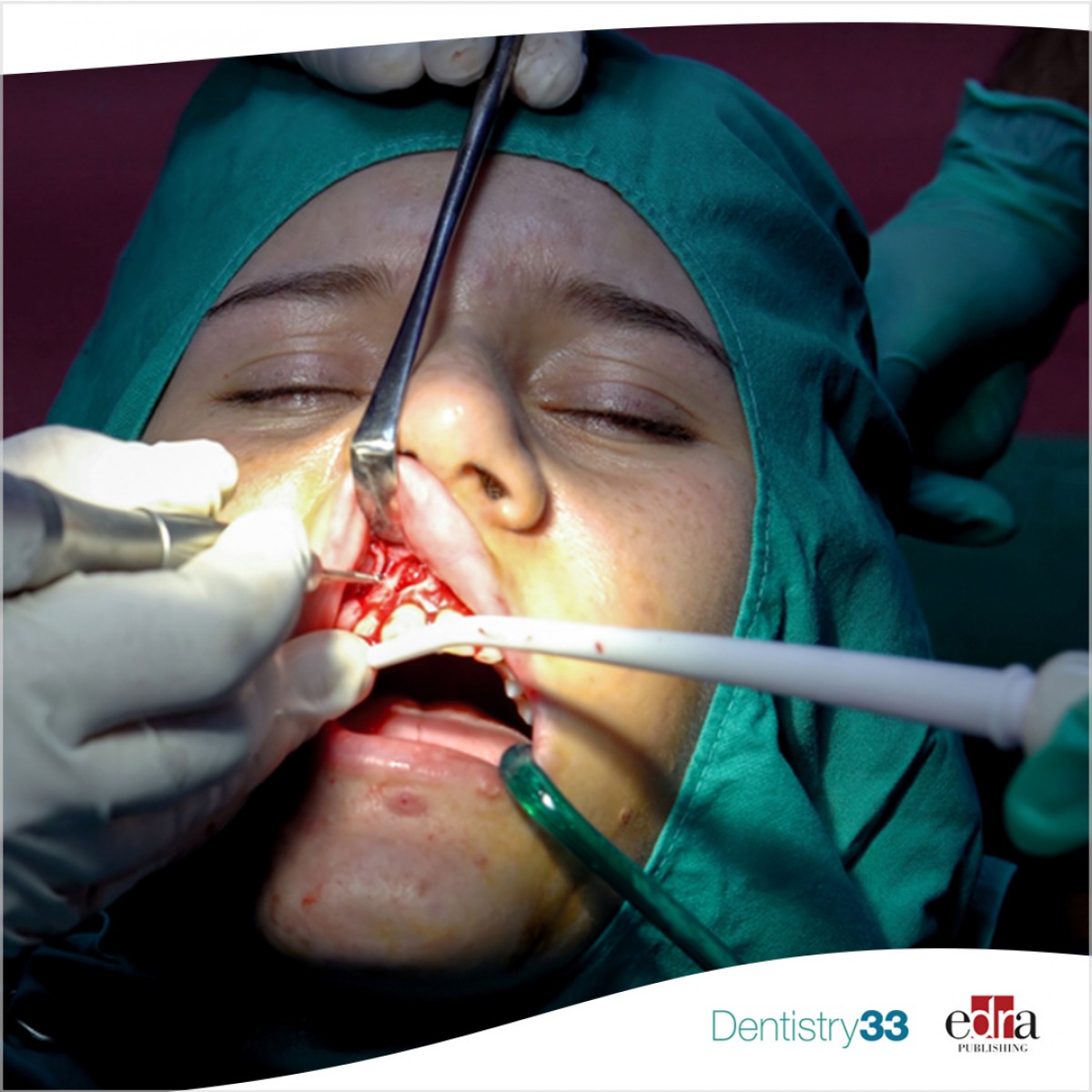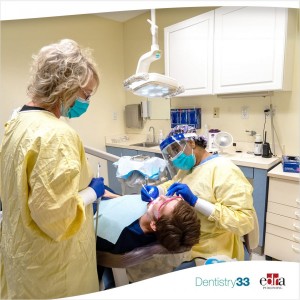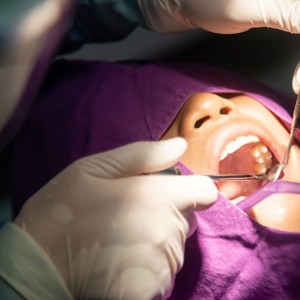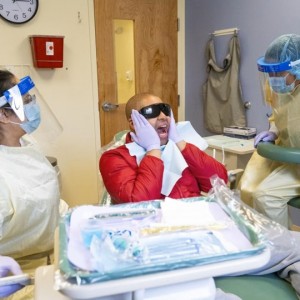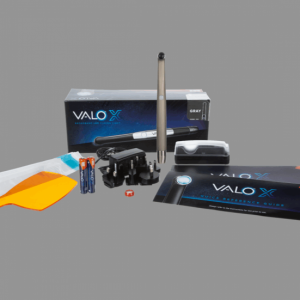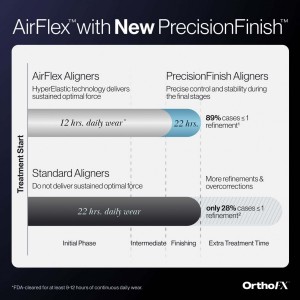
Blood components for non-transfusion use in oral surgery
By Davide Bencivenni, Pierantonio Bellini, Camilla Garuti, Ugo Consolo
In dentistry, platelet concentrates are used in situations where tissue regeneration is required, with the aim of restoring and regenerating tissue altered or destroyed by pathologies or surgical trauma in a shorter time.
These are autologous products obtained with a minimal amount of venous blood, through manipulation with closed circuit systems. Among them, L-PRF has a safe and promising use in the dental field. It can be used alone or together with other graft materials according to the needs and is, due to its peculiarities, the most used among the blood components in oral surgery.
This article aims to define a complete picture of the current clinical applications of L-PRF and to share preliminary clinical cases.
Materials and Methods
Three clinical cases of oral surgery were performed, selected among the possible fields of application of L-PRF to date established in the literature, at the U.O. Gold Maxillofacial Surgery of the Polyclinic of Modena.
- Case 1: patient treated for dysodontiasis of 3.8; this element has a sagittal inclination greater than 50° and a considerable impact on the left second molar. These clinical conditions could lead, with a high probability, to periodontal damage for 3.7. For this, surgical extraction of the third molar was performed and L-PRF placement in the post-extraction socket.
- Case 2: exeresis of an inflammatory odontogenic cystic lesion in the premaxilla and filling of the defect with L-PRF associated with deproteinized heterologous bovine material to favor bone regeneration of the defect. L-PRF membranes were placed in the buccal portion of the defect.
- Case 3: treatment of bisphosphonate-induced osteonecrosis in which, following sequestrectomy and extensive curettage of the lesion, LLPRF membranes were inserted into the site of the sequestrum to fill the residual defect. In this case the blood component was used to bring a supra-physiological quantity of growth factors to the site of the operation and to stimulate neoangiogenesis, thus promoting bone healing but also the formation of a good mucous seal.
Results
Each with its own peculiarities, the patients treated did not report any swelling or post-operative pain. Clinical courses at 7 days appeared regular, with no signs and symptoms of infection or inflammation. In the controls performed at 6 months, the mucous seals were correctly maintained and radiographically the new bone formation already appeared in good condition.
Conclusions
From the cases performed by the authors, for the moment only a clinical impression can be deduced on which to make considerations from which to start for experimental studies on the application of L-PRF in different clinical situations. From this, in the future its role in oral surgery could be effectively clarified to be able to give the clinician guidelines regarding its use.
Clinical significance
Non-transfusion blood products, especially L-PRF, may be candidates for tissue regeneration. In the not-too-distant future, they could make it possible to reduce the use of heterologous biomaterials in favor of a completely autologous material, at reduced cost and potentially very effective. Furthermore, associated with biomaterial, it can enhance its effectiveness and make it more manageable by the surgeon himself.
This article appeared originally in Dental Cadmos: https://www.dentalcadmos.com/emocomponenti-a-uso-non-trasfusionale-in-chirurgia-orale/
 Related articles
Related articles
Editorials 23 April 2025
Commonly prescribed medications for high blood pressure have unexpected side effects
Henry Daniell of Penn Dental and collaborators found that ACE inhibitors dramatically reduced the activity of ACE2, a critical cardioprotective enzyme.
Oral surgery 01 April 2025
High Incidence of Blood Exposure Due to Imperceptible Contaminated Splatters During Oral Surgery
To evaluate the incidence of blood exposure during outpatient oral surgery from splattering caused by use of high-speed rotary instruments at the Referral and Teaching Center, University Dental...
Blood-borne pathogens (BBPs) are infectious microorganisms that are found in human blood and can cause diseases in humans. Health care workers such as physicians, surgeons, nurses, dentists, dental...
Market 17 July 2023
UNC to launch pilot program to provide dental care for veterans with blood cancer
Donation from Leukemia and Lymphoma Society to fund initiative
The pilot program within the Adams School of Dentistry will help fill in care gaps often faced by service men and women when seeking oral health care.
Oral surgery 21 June 2023
Current literature has shown a direct association between biomarkers and adverse stimuli that determine anxiogenic responses.
 Read more
Read more
Oral surgery 27 October 2025
The authors assessed the incidence of postoperative bleeding in patients who were highly anticoagulated and in patients who underwent extensive oral surgical procedures and who continued using oral...
With a new name, Tufts Special Care Dental Clinics continues a 50-year mission of treating people with intellectual and developmental disabilities
Ultradent Products, Inc., a leading developer and manufacturer of high-tech dental materials, is announcing the launch of VALO X Colors: new, vibrant finishes for the award-winning VALO X curing...
News 27 October 2025
OrthoFX, a leading innovator of shorter wear time aligner systems, announces AirFlex with new PrecisionFinish Aligners.
News 27 October 2025
Young Innovations Strengthens North American Leadership Team
Young Innovations, a leading global manufacturer and distributor of dental supplies and equipment, is pleased to announce two significant additions to its North American leadership team as part of...


